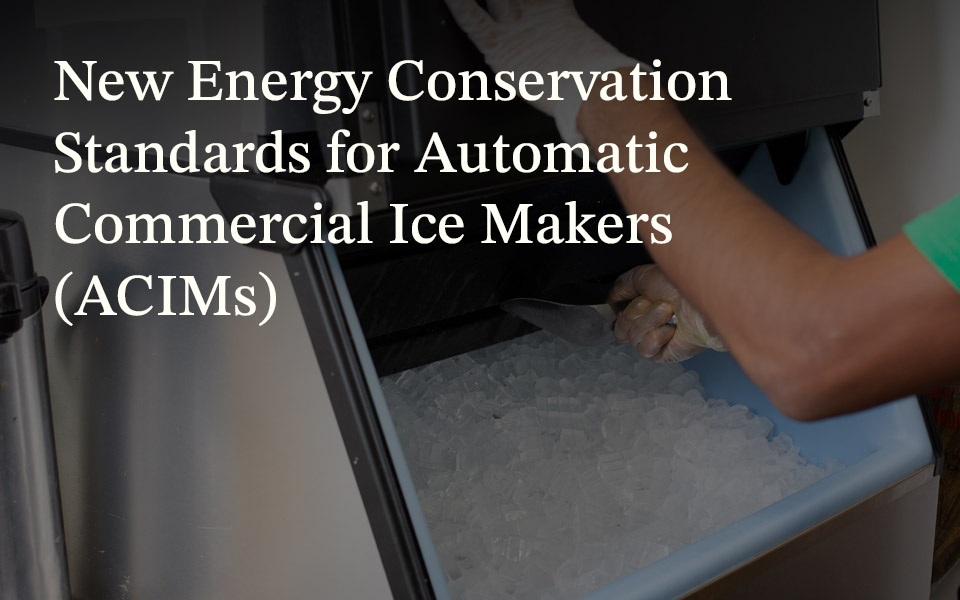It’s Earth Day, which means we should all take a minute to reflect on how we can do our part to make the planet a greener place. In the world of commercial refrigeration, environmental initiatives and sustainability best practices typically focus on limiting the harmful effects of hydrochlorofluorocarbon (HCFC) and hydrofluorocarbon (HFC) refrigerants. When these refrigerants leak into the atmosphere via direct emissions, their environmental impacts can be measured in terms of ozone depletion potential (ODP) and global warming potential (GWP).
But when considering the total equivalent warming impact (TEWI) of commercial refrigeration systems, direct emissions are only part of the equation. TEWI also considers indirect impacts, or the greenhouse gases generated from the energy consumed to run these systems — estimated to represent as much as 95 percent of the total climate impact. At Emerson, we take both energy efficiency and refrigerant GWP into consideration to evaluate the full lifecycle climate performance (LCCP) of a system and its fluids.

Montreal Protocol to complete R-22 phaseout
Today, most global refrigerant regulations are focused on phasing down high-GWP HFCs. But it’s important to remember that these activities have a precedent that’s more than three decades old. In 1987, the Montreal Protocol treaty aimed to phase out ozone-depleting substances (ODS), such as the commonly used HCFC, R-22. This global treaty was since ratified by 197 countries, including the United States, Canada and Mexico, all of whom have followed its recommended phaseout schedule.
The next step in this process will take place in 2020, when the production and import of R-22 will no longer be allowed under the Environmental Protection Agency’s Clean Air Act. It may come as a surprise to some, but there are still untold operators with older refrigeration systems that are currently charged with R-22. Unlike smartphones and other commodities that we change or upgrade every year, commercial refrigeration equipment can have a lifespan of 20 to 30 years. This phaseout will likely lead to an increase in system retrofits in the near term, especially as operators exhaust their supplies of R-22.
Thankfully, there’s a good deal of evidence that since the removal of ozone-depleting substances from the environment began, the ozone layer is on the mend. Some estimates state that the ozone hole above Antarctica could close by the 2060s.
HFCs targeted for global warming potential
As the HCFC phaseout began decades ago, the industry transitioned to HFCs with very low ODP. Unfortunately, many of these have since been discovered to have varying degrees of GWP. In fact, the most common HFC used in commercial refrigeration is R-404A, which has a GWP of 3,922 and is considered on the high end of the GWP scale. It’s no surprise then that it was among the first refrigerants to be targeted for phasedown under the EPA’s Significant New Alternatives Policy (SNAP) rules 20 and 21.
But per the 2018 ruling by the U.S. Court of Appeals, the EPA no longer has the authority to regulate the use of refrigerants based on their GWP under the framework of the Clean Air Act. While we expect the EPA to soon provide clarity on the future of its HFC initiatives, there currently is no federal mechanism through which the proposed phasedown of high-GWP refrigerants will take place.
In the meantime, California has adopted the original EPA SNAP framework into law, and as of January 1, R-404A and R-507A are no longer allowable in many new commercial refrigeration applications. California is just one of 23 states or territories in the U.S. Climate Alliance that are making commitments to enforce similar climate protection initiatives. Currently, this growing alliance represents half of the U.S. population and more than 50 percent of the national GWP.
Globally, the Kigali Amendment to the Montreal Protocol seeks to expand the treaty’s scope from just ozone protection to addressing global warming by phasing down short-lived climate pollutants, including HFCs. While this amendment has yet to be ratified by the United States, it has achieved the required ratification of 20 member countries to take force — including Canada and the United Kingdom, among others. For participating countries, the Kigali Amendment took effect on January 1.
Exploring the alternatives
Because regulatory variances occur from state to region to country, there are vastly different levels of environmental awareness throughout our industry. While operators in California are cognizant of the state’s efforts to phase down HFCs, there are many U.S. areas where transitioning to lower-GWP refrigerants isn’t as high of a priority.
Regardless, many top retailers have begun the process of exploring low-GWP refrigerant options as part of their sustainability objectives. Not only do they have retrofit plans in place, some are even trialing alternative refrigerant architectures in their stores — with hydrofluoroolefins (HFOs), HFO/HFC blends and natural refrigerants as leading options.
There are relatively minimal retrofit requirements when moving from R-404A to R-448A/R-449A — both A1 HFC/HFO blends — such as adding compressor cooling and other minor system changes. For a greenfield location or a complete system overhaul of an existing site, operators may consider one of many emerging low-GWP options, including:
-
- Low-charge ammonia chillers on the roof
- A2L (mildly flammable) blends in chillers on the roof and machine rooms
- Distributed, small-charge systems with both A1 and A2L refrigerants
- R-290 integrated cases outfitted with micro-distributed systems
- CO2transcritical and/or cascade systems using CO2 for low temperatures, and an HFO (or lower-GWP HFC) for medium temperatures
Refrigerant management best practices
As always, proper refrigerant management practices are important, regardless of the type of refrigerant used. Operators should start with a documented leak detection plan that includes the necessary tools and early-detection methods to identify and quickly respond to leaks. Leaks are not only bad for the environment; they also degrade refrigeration performance and system energy efficiencies.
With the new class of refrigerants, it’s especially important that technicians are trained to understand proper handling, charging and performance characteristics. In addition, as systems charged with higher-GWP HFCs eventually reach the end of their lifespans, it’s critical that service technicians follow proper recovery and disposal protocols.
Earth Day is a good time to reflect on the environmental progress our industry has made. At Emerson, we’ll continue to support sustainability objectives with compressors, components and systems that are both environmentally responsible and economically viable.

Refrigerant Transition Highlights the Importance of Leak Detection
Although detecting and minimizing leaks in commercial refrigeration equipment have always been...

Let the Refrigerant Phase-in Begin
Evaluating next-generation commercial refrigerant alternatives in established and emerging...

Reviewing Proposed Energy Efficiency Standards for Ice Machines
Earlier this year, the Department of Energy (DOE) published a notice of proposed rulemaking (NOPR)...
